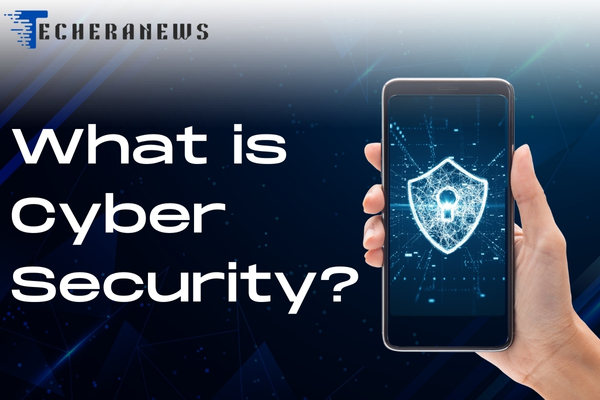Cyber security involves protecting systems, networks, and programs from digital attacks. These attacks often aim to access, change, or destroy sensitive information, extorting money from users, or interrupting normal business processes.
A growing trend within the field is the proliferation of remote cyber security jobs. This shift allows professionals to work on securing organizations from any location, leveraging their expertise to protect against global threats. This trend not only broadens the pool of talent for companies but also provides flexibility for cybersecurity experts. These roles are crucial in today’s digital era, where threats can come from anywhere and at any time. Remote cyber security jobs are essential in building resilient defense systems for businesses operating in a connected world.
How Cyber Security Works: Protecting Digital Assets
Cyber security is an essential framework of practices, technologies, and processes designed to protect systems, networks, programs, devices, and data from attack, damage, or unauthorized access. Here’s a detailed look at how cyber security functions to safeguard information and ensure data integrity in a digital world.
Understanding the Cyber Security Framework
1. Threat Identification:
The first step in cyber security involves identifying potential threats. This can include everything from malware, phishing attacks, ransomware, and spyware to more sophisticated cyber threats that evolve continually. Professionals stay updated on the latest threats by monitoring cyber security news and using advanced threat detection tools.
2. Risk Assessment:
Once threats are identified, the next step is assessing the risk they pose to an organization’s digital assets. This assessment helps in prioritizing the threats based on their potential impact and the likelihood of their occurrence.
3. Implementation of Security Measures:
To defend against identified risks, various security measures are implemented. These include firewalls, anti-virus software, intrusion detection systems (IDS), and encryption protocols. These tools help in preventing unauthorized access and securing data transfers.
4. Continuous Monitoring and Defense:
Cyber security is not a one-time fix but a continuous process. Systems must be regularly monitored for any suspicious activity. This includes tracking data access and usage, which helps in detecting breaches early before they can cause significant damage.
5. Incident Response and Recovery:
In case of a security breach, a well-structured incident response plan is activated. This plan outlines the procedures for addressing and mitigating the effects of a cyber attack. Effective incident response strategies are crucial for minimizing downtime and restoring systems to normal operations as quickly as possible.
6. Education and Training:
One of the most critical components of cyber security is ongoing education and training for all users. Regular training sessions on safe internet practices, recognizing phishing attempts, and the importance of regular updates contribute significantly to an organization’s overall security posture.
For those interested in joining the field, roles vary from cyber security engineers who design and implement security solutions to analysts who monitor and respond to threats. These positions often require specific knowledge and skills, frequently updated through continuous learning and practical experience.
What are the risks of having poor cybersecurity?
Having inadequate cybersecurity measures can expose organizations to significant risks. These vulnerabilities can lead to data breaches, financial loss, and reputational damage. Cyber attackers can exploit weak security systems to steal sensitive information, such as customer data, intellectual property, and financial records. Such breaches not only result in direct economic losses but also fines and lawsuits.
Furthermore, poor cybersecurity can disrupt business operations. For instance, a ransomware attack can lock out essential files and systems, halting production lines, freezing financial transactions, and causing extensive downtime. This disruption often leads to loss of business and eroded trust among clients and partners.
What can you do to improve your cybersecurity?
In today’s digital age, enhancing cybersecurity is crucial for both individuals and organizations. Here are practical steps you can take to bolster your cybersecurity defenses:
Update Regularly:
Keep all systems, software, and devices updated to the latest versions. Regular updates help patch security vulnerabilities and protect against new threats.
Use Strong Passwords:
Employ complex passwords and update them periodically. Consider using a password manager to maintain strong, unique passwords for different accounts.
Implement Multi-Factor Authentication:
Add an extra layer of security by using multi-factor authentication (MFA) wherever possible. This practice significantly reduces the risk of unauthorized access.
Educate and Train:
Regularly train employees on cybersecurity best practices and current cyber threats. Awareness can prevent phishing and other socially engineered attacks.
Secure Your Networks:
Use firewalls, encrypt sensitive data, and secure your Wi-Fi networks. Proper network security is vital to preventing unauthorized data access.
Regular Backups:
Ensure that data is backed up regularly and that backups are stored securely. This step is essential for data recovery in the event of a cyber-attack or other data loss incidents.
Hire Remote Cyber Security Experts:
Leveraging remote cyber security jobs can provide access to top talent globally. These professionals can work flexibly and responsively to strengthen your cybersecurity measures, offering expertise that adapts to the evolving digital threat landscape.
By following these steps, you can significantly enhance your cybersecurity posture and better protect yourself against the increasing number of cyber threats.
Types of Cyber Security: Key Areas to Know
Cyber security encompasses several fields, each focusing on protecting different aspects of the digital and networking infrastructure. Understanding these types can help organizations and individuals tailor their security strategies effectively.
Here’s a breakdown of the main types of cyber security:
Network Security:
This type protects the integrity of your data in transit and prevents unauthorized intrusions into networks. Techniques include firewalls, anti-virus software, and intrusion detection systems.
Application Security:
Aimed at keeping software and devices free of threats, application security starts at the design phase, well before a program or device is deployed. It involves regular updates and testing to manage security patches.
Information Security:
This protects both physical and digital data from unauthorized access, use, disclosure, disruption, modification, inspection, recording, or destruction.
Operational Security:
This involves the processes and decisions for handling and protecting data assets. The permissions users have when accessing a network and the procedures that determine how and where data may be stored or shared all fall under this umbrella.
Disaster Recovery and Business Continuity:
This type defines how an organization responds to a cyber-security incident or any other event that causes the loss of operations or data. Disaster recovery policies dictate how the organization restores its operations and information to return to the same operating capacity as before the event.
End-user Education:
Addressing the most unpredictable cyber-security factor: people. Users can accidentally introduce a virus to an otherwise secure system by failing to follow good security practices. Teaching users to delete suspicious email attachments, not plug in unidentified USB drives, and various other important lessons is vital for the security of any organization.
Cloud Security:
With many services now being operated in the cloud, this area is focused on protecting data stored online from theft, leakage, and deletion. Methods include firewalls, penetration testing, obfuscation, tokenization, virtual private networks (VPN), and avoiding public internet connections.
Each type of cyber security has its unique challenges and requires specialized expertise.
Conclusion: Staying Ahead in Cyber Security
Understanding the multifaceted nature of cyber security is essential for protecting against the dynamic threats in today’s digital landscape. From ensuring robust network security to implementing rigorous training and education, every element plays a crucial role in fortifying defenses and maintaining data integrity. Embracing the variety of cyber security measures—from employing advanced threat identification techniques to deploying incident response strategies—helps mitigate risks associated with poor cybersecurity, which can lead to significant financial and reputational damages.
As the digital world evolves, so does the nature of remote cyber security jobs, offering professionals the flexibility to tackle global security challenges from anywhere. This adaptability not only enhances an organization’s capability to respond to threats swiftly but also leverages diverse expertise across different regions.
For continuous updates on the latest in cyber security, including trends, tools, and best practices, turning to resources like Techeranews can be invaluable. Techeranews provides up-to-date insights that are crucial for anyone involved in or interested in cyber security, helping them stay informed and prepared in a field where staying ahead of threats is not just beneficial, but necessary.
















Leave a Reply